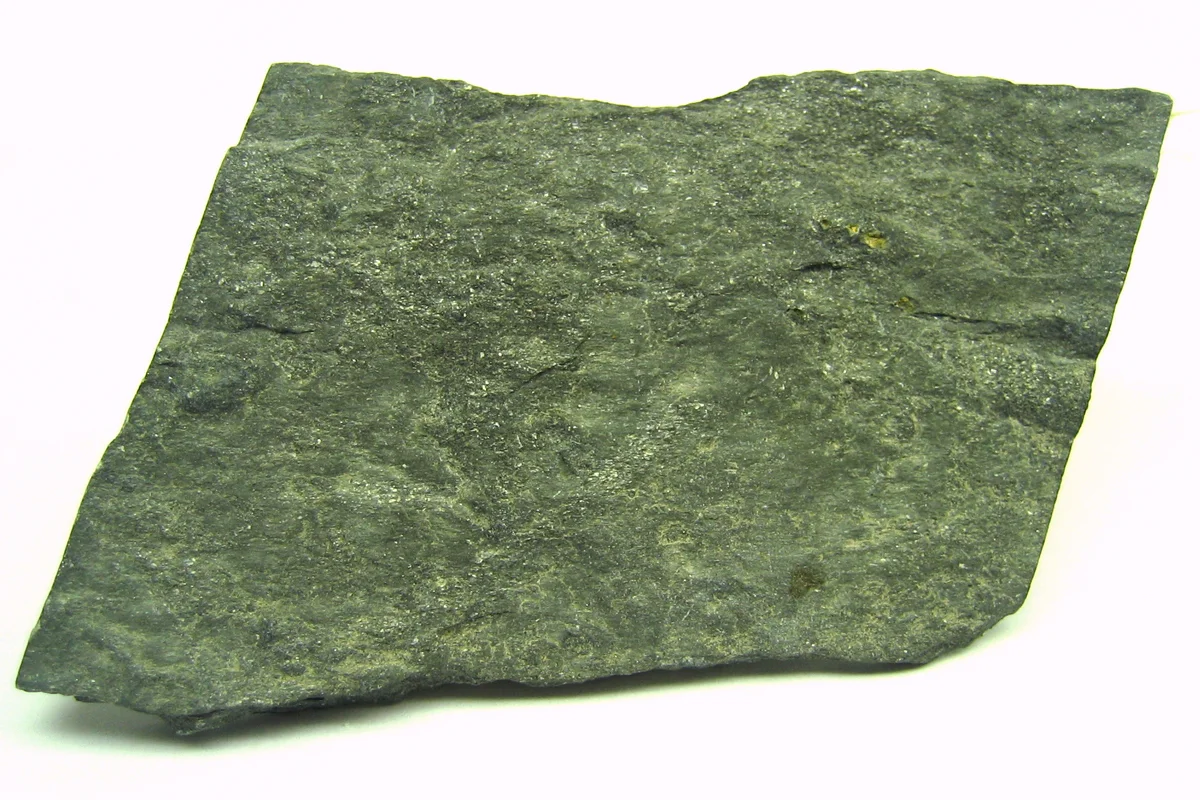Properties of Slate
Slate is a fine-grained metamorphic rock that forms from the sedimentary rock shale. It is characterized by its ability to split into thin, flat layers, making it useful for roofing, flooring, and other construction applications. Slate is often gray, but it can come in various colors, and it is valued for its durability and aesthetic appeal.

The following table provides a list of slate properties in both SI and US customary/Imperial units at normal temperature and pressure (NTP).
Click on the button to switch between Metric and Imperial units.
| Physical Properties | Metric |
|---|---|
| Density | 2700 - 2950 kg/m3 |
| Porosity | 0.1 - 4.3% |
| Mechanical Properties | Metric |
| Young’s Modulus (E) | 10 - 110 GPa |
| Tensile Strength | 7 - 20 MPa |
| Compressive Strength | 59 - 304 MPa |
| Modulus of Rupture | 34 - 110 MPa |
| Hardness (Mohs) | 3 - 5 |
| Thermal Properties | Metric |
| Thermal Conductivity | 0.9 - 3.3 W/m·K |
| Specific Heat Capacity (Cp) | 711 J/kg·K |
| Coefficient of Thermal Expansion (αL) | 10-5 - 1.2×10-5 1/°C |
| Electrical Properties | Metric |
| Electrical Resistivity | 7.5×104 Ω·cm |
Unless stated otherwise, all values are taken at room temperature (approximately 20°C or 68°F) and 1 atm pressure. (1 atm = 101,325 Pa)
References: 1) Cardarelli, François. Materials Handbook: A Concise Desktop Reference. Switzerland: Springer International Publishing, 2018. 2) CRC Handbook of Chemistry and Physics, 97th Edition. United Kingdom: CRC Press, 2016-2017. 3) A.M. Howatson, P.G. Lun, J.D. Todd, P.D. Engineering Tables and Data. United Kingdom: University of Oxford, Department of Engineering Science, 2009. 4) Stone: Building Stone, Rock Fill and Armourstone in Construction. United Kingdom: Geological Society, 1999.
